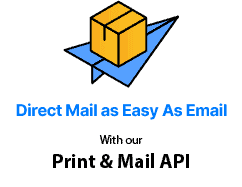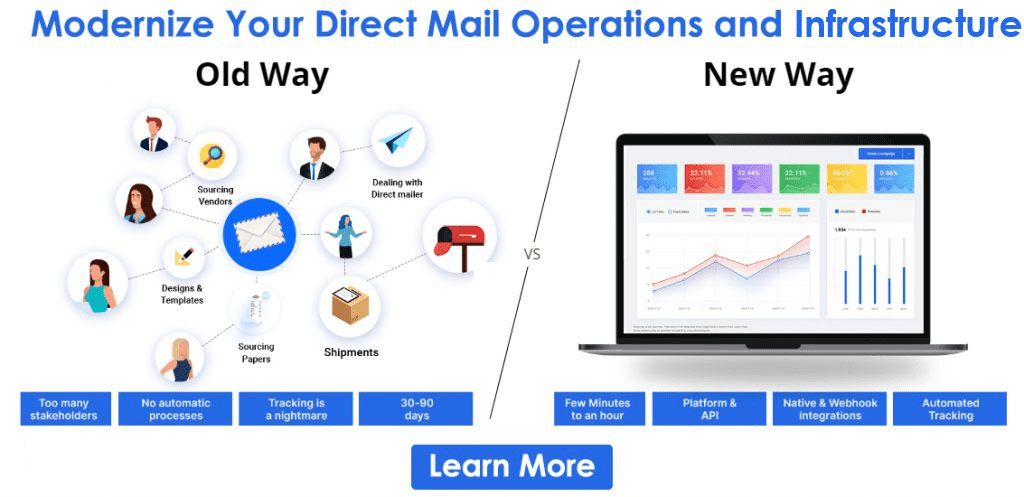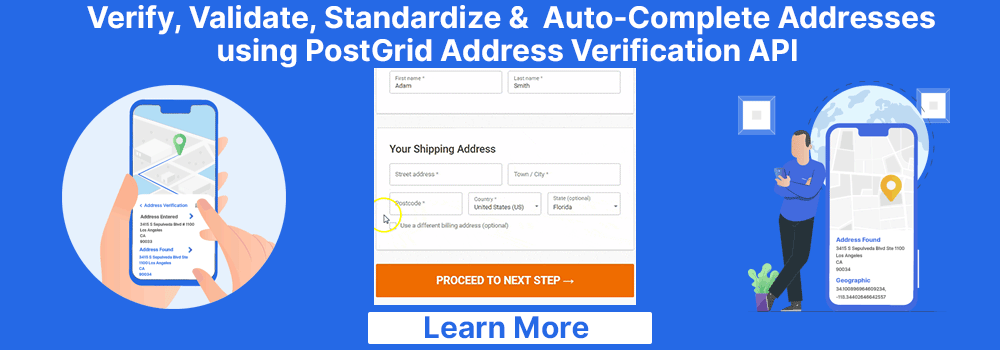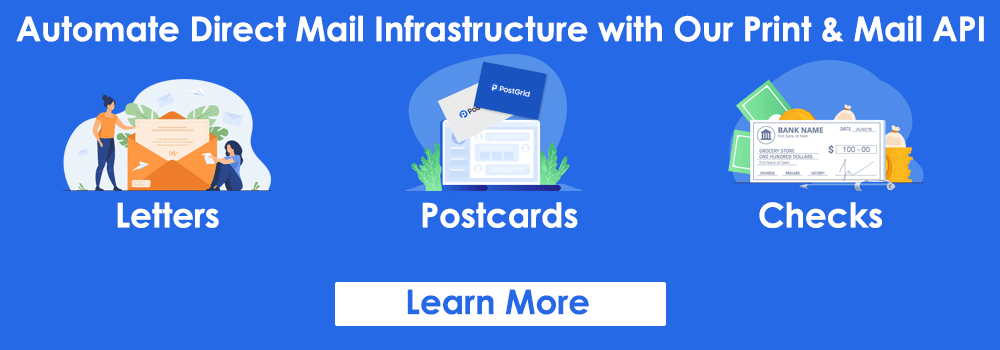Business Mailing Lists: Business & B2B Mailings Lists
Business Mailing Lists: How To Create The Best B2B Mailing Lists For Your Company?
Have you ever wondered how you can efficiently use your B2B marketing mail lists?
As a marketer or business owner, have you ever felt like you are not getting the desired result for your B2B campaigns?
If yes, the problem may be due to your mailing lists.

Many B2B businesses do not give a second thought about their mailing lists. They are seldom ignorant of how the mailing list characteristics can affect their marketing campaigns. Most businesses use their mailing lists only to ensure the validity of their address data.
Many companies are not even aware of the different types of mailing lists, let alone how to use them correctly. This article explains what a B2B mailing list is and how you can optimize it to get the best result for your marketing campaigns.
What Are Business Mailing Lists?
Business mailing lists, also called B2B mailing lists, are known to contain the contact information for the decision-makers of business organizations. These decision-makers usually have the authority to buy bulk products for their business organization.
The business mailing lists are different from the regular mailing lists used by commercial businesses. Here, the sales are in bulk, and the purchase value is significantly higher than the retail purchases. Hence, there is much more at stake in B2B marketing than retail marketing.
Companies need to ensure that they have a high-quality mailing list to quickly and efficiently connect with an organization’s key decision-makers. It is always advisable to check the validity of the addresses in B2B mailing lists before you start your marketing campaign.
Types Of Business Mailing Lists
You can categorize business mailing lists into five different categories or types. Identifying the various mailing lists will help you target your B2B marketing efforts better. Listed below are the five different kinds of B2B business mailing lists you should be aware of:
- Compiled Mailing Lists
- Response Mailing Lists
- Attendee/Membership/Seminar Mailing Lists
- Subscription Mailing Lists
- Merged Database Mailing Lists
Compiled Mailing Lists
Compiled mailing lists include the details of people or companies, which are “compiled” from numerous established publishing sources. Industry listings and directories such as Yellow Pages are popular, published sources used for creating compiled mailing lists for businesses.
When To Use It?
Compiled mailing lists are perfect for conveying your message to a specific yet large audience. For example, suppose you own a medical equipment supplies business and want to pitch your products to potential buyers. In this case, you can target all the hospitals in a specific area or across the country based on the scope of marketing needs.
Response Mailing Lists
This type of business mailing list contains credible and proven direct mail data of customers. Usually, businesses can obtain this data from past customers who have already bought products from a company. Additionally, the mail orders that use a response mailing list generally get high rates of return from mailings.
The response list is significantly more effective when it comes to matching the right products for the target audience. Hence, it often gets a high response rate from the recipients. Here, the companies already have access to the target’s buying history. Hence, companies can match the customers’ purchase history with the product or service they want to sell.
When To Use It?
You can observe a perfect applicational example of a response mailing list targeting book buyers. For example, certain educational institutions may order bulk education materials like question banks. So, if you want to sell an updated question bank that includes solved question papers, you can target this specific mailing list.
Attendee/Membership/Seminar Mailing Lists
Trade shows, industry conferences, and other such events often see a large audience that belongs to specific niches. People don’t attend such events just for fun. They do so because they are keen on the products or services showcased in such events.
Furthermore, most specialized events charge a significant amount as attending fees to these events. No one would be willing to shell out money like that unless they are genuinely interested in the industry sector. As a result, such events get access to highly targeted b2b lists.
When To Use It?
If you want to run a highly targeted marketing campaign, you should check Attendee/Membership/Seminar mailing lists. You can conduct an in-house event if you can’t access such mailing lists from external business events.
Even something as simple as conducting a seminar on a relevant topic can help you connect with the appropriate audience. It also means that you can directly get the highly targeted customers’ mailing details.
Consider using postcards for sending such invites as they are often more effective in generating a response. It allows you to invite the customer with a few words and use attractive images. You can learn more about using postcards for direct mail campaigns on our blog “A Beginner’s Guide to Postcard Marketing.”
Subscription Mailing Lists
Marketers across all industry verticals love subscription mailing lists. One reason for this is that the subscription mailing lists are often large and contain much relevant information. You can categorize subscription mailing lists mainly into two categories.
- Controlled Circulation Subscription Mailing Lists
- Paid Circulation Subscription Mailing Lists
Controlled Circulation Subscription Mailing Lists
In controlled circulation subscription mailing lists, the reader receives an item such as a magazine, newsletters, or more for free. However, to receive it for free, the reader must prove that they belong to a specific professional category.
For example, suppose you want to receive a home decor magazine. In that case, you must prove that you work in a professional field related to it. Hence, if you are an interior designer or real estate agent and can prove it, you may access the free magazine.
However, the publisher sets these prerequisites and can vary from one business to another. The reader or customer can furnish their proof by filling out a subscription form, also called a qualification card by some.
Paid Circulation Subscription Mailing Lists
Paid circulation is much more straightforward than controlled circulation subscriptions. Here, the reader doesn’t have to fill out additional forms or provide proof for their professional background. The only data the reader must provide is their name and address.
However, as the name suggests, in this case, the reader has to pay a subscription fee for receiving the magazine.
When To Use It?
Marketing lists B2B are highly targeted, and hence, controlled circulation subscription lists are preferable for business mailing. Here, we know that the reader or subscriber works professionally for a relevant industry.
Remember that controlled circulation subscription mailing lists have additional details collected from them. It includes details such as:
- Job Title
- Job Function
- Company Size
- Types of Products The Company Purchases
Even though the subscriber may not be a key decision-maker for the company, familiarity with your brand can still help you. It is also worth noting that the Paid Circulation Subscription Mailing Lists may not be the best option for B2B mailing lists. It is best suited for mail order offers rather than bulk orders.
Merged Database Mailing Lists
The merged database mailing list is a master list created by compiling several other mailing lists together. Merging processes usually involve cleaning the final list of duplicate or repeated data and grouping specific markets together.
The merging list is popularly known as the master list as it has the business contact lists from different sources. It allows you to reach specific markets through a high-quality list. Furthermore, the address cleansing ensures no wrong or undeliverable addresses are on your list.
When To Use It?
Merged database mailing lists are among the best b2b mailing lists you can find. It gives you access to extensive data to target a wider audience. Hence, you can use merged database mailing lists for all highly-targeted campaigns with a large audience.
However, when using merged database mailing lists, or any other B2B lists, you need to ensure that the data is accurate. Getting rid of duplicate names and addresses, especially for merged database mailing lists. Using a SERP-certified address validation tool like PostGrid can help you get rid of erroneous data and ensure the best quality for your database.
B2B Mailing Lists And Its Selects
Selecting a B2B mailing list can be a long and tedious process based on your unique requirements. You can’t just pick any free mailing list you find online and pour all your resources into implementing a marketing strategy.
There are countless business list selects you can choose for categorizing and targeting your campaigns. Now, we will discuss a few of the most valuable selects you can consider before deciding on B2B mailing lists.
#1 Business Category or SIC code
One of the most basic and standard selects for the B2B marketing list is the business category or SIC code. The SIC code is short for the Standard Industrial Classification code. It is also worth noting that the US Department of Commerce assigns the SIC codes.
Why is The SIC Code Important?
The SIC system organizes all industries in the US and classifies them according to their primary activity. In other words, you can use a 4-digit SIC code to determine whether you are targeting a relevant business organization or not. It means you can find out whether a business organization is a potential customer by finding their SIC code.
Want An Even More Specific Classification of Businesses?
Other classification systems for businesses in the US expand on the SIC code system, such as Dun & Bradstreet’s classification system. They provide you with more specific companies, including detailed business definitions. It allows you to enhance your B2B lists and get better marketing results.
#2 Annual Sales Volume Of The Company
Another significant aspect that businesses need to consider for the audience in the business contact lists. You can base your B2B marketing campaigns on the annual sales volume of the companies you want to target.
There are many instances where B2B businesses think they got a quality lead only to find out that their requirement is too low. In this case, you can opt to target companies whose annual sales volume lies within a set of specific values.
#3 Number Of Employees In The Company
When it comes to creating mailing lists business to business, you should also consider the number of employees in the company. It can help you better target your customers based on your deliverability rather than their requirements.
Which, if you think about it, is the same as doing it the other way around. Here is how you can categorize your target companies based on their number of employees.
- Small Companies: Small companies have fewer employees than your average customer. One of the things to note about smaller companies is that they often require outside help as their in-house capabilities are very limited.
- Large Companies: The reason for targeting larger companies is apparent. Larger companies often have high volume demand for your products. However, be careful to analyze their requirements and ensure that you meet them without fail.
- Average Level Companies: The average level companies have the same number of employees as your current customers. Usually, the requirements of such companies will be the same as your current ones. Hence, there is minimal scope for a surprise with such targets.
Consider the following table for classifying companies based on their number of employees.
| Level Of Company | Number of Employees |
| Level 1 | 1 employee |
| Level 2 | 2-4 employees |
| Level 3 | 5-9 employees |
| Level 4 | 10-24 employees |
| Level 5 | 25-49 employees |
| Level 6 | 50-99 employees |
| Level 7 | 100-249 employees |
| Level 8 | 250-499 employees |
| Level 9 | 500-999 employees |
| Level 10 | 1,000-2,499 employees |
| Level 11 | 2,500-4,999 employees |
| Level 12 | 5,000-9,999 employees |
| Level 13 | 10,000-14,999 employees |
| Level 14 | 20,000+ employees |
#4 Business Owner
You can base your B2B mailing lists on specific business owners. It means you can select the name of specific high-level personnel in an organization. Usually, this personnel is authorized to make or influence a bulk purchase decision for the organization.
Hyper-Personalized Direct mail
In such cases, you must use hyper-personalized direct mail as you are addressing a specific individual. Make sure to pitch your marketing message with a relevant product or service that the business owner is likely interested in.
For example, let’s consider the case of business mailing lists for healthcare supplies manufacturers. Here, you can use direct mail to explain the benefits of your healthcare products or supplies to the hospital/clinic owners.
Use Direct Mail Automation Tools For Better Results
Consider the above example again. Implementing a personalized direct mail campaign for boosting sales engagements requires advanced tools. Use an advanced automation tool like PostGrid for conveniently personalizing your direct mail to the business owners.
You can use PostGrid advanced direct mail automation to create highly personalized direct mail. In the example above, the manufacturer can use personalized direct mail to explain the benefits of their healthcare product/service to the owners.
Similarly, you can explain the specific benefits of your product or service to the business owners you want to target. Remember that your direct mail should focus on the buyer’s benefits rather than the fancy features your product/service offers.
#5 Type Of Company
It is usual for companies to categorize their target audience based on specific niches or types. However, when creating marketing lists B2B is not simply about the type of product or service that your target companies sell.
Companies With Single Location And Branches
One of the best classifications of mailing lists business to business is based on the target business’s site options. In other words, you can categorize businesses with a presence in a single location as one class. You may also categorize companies based on their headquarters and branch locations.
Subsidiary Companies
Another way to classify your business target audience is by making a list of subsidiary companies that fall under a single brand. It can help you market multiple businesses at once and get you bigger and more quality leads.
Legal Status Of The Companies
You can also group your target companies based on their legal status. For example, some companies you want to target may be corporations, and others may be partnerships. Similarly, there are also private and public limited companies.
It is important to classify your B2B lists like this because of the differences among their stakeholders or decision-makers. Classifying businesses like this enable you to use more accurate marketing messages and specify the target audience.
Import And Export Manufacturer Companies
If yours is a business that specifically targets manufacturers, you can differentiate between the exporters and importers. Much like the other classifications we discussed, this will also help target your audience with a relevant and effective marketing message.
Non-Profit Organizations
Businesses like financial service providers often collaborate with non-profit organizations. Such businesses should consider locating 401-C 3 corporations. Furthermore, experts like PostGrid have specialized mailing services for financial service providers and save 1000s of hours with direct mail automation.
#6 A Company’s Number of Years In The Business
Another significant aspect you need to consider for business contact lists is the number of years since the company’s formation. The number of years in business effectively reveals a newly established from well-established companies.
Certain B2B businesses prefer to categorize their target audience based on their years in business. One of the most common B2B mailing lists classifications is the group of companies with less than one year in business.
In many cases, such companies often need extra help as they are yet to become self-sufficient. The classification based on years in business for your business audience is as follows.
| Business Group | Years In Business |
| Group 1 | < 1-year |
| Group 2 | 2 to 3 years |
| Group 3 | 4 to 5 years |
| Group 4 | 6 to 10years |
| Group 5 | 11 to 15 years |
| Group 6 | 16 to 20 years |
| Group 7 | > 21 years |
#7 ZIP Code, City or County
One of the primary forms of classifying your business audience list is based on the company’s address. You can target businesses within various levels of proximity to your business. It means you can target business organizations within a specific geographic area based on their:
- ZIP Code
- City
- County
- Metro Areas
Geocoding And Reverse Geocoding For Marketing
One of the more advanced marketing involves using geocoding and reverse geocoding capabilities. It enables you to build a map of potential B2B buyers or their physical location to find their mailing addresses. Furthermore, it is an excellent way for businesses to enhance their B2B marketing lists without much trouble.
PostGrid provides advanced reverse geocoding capabilities to its customers to optimize their direct mail campaigns. Advanced direct mail automation and access to additional features like geocoding make PostGrid your ideal partner for creating quality B2B lists.
Conclusion
Creating quality business mailing lists is no easy task. It takes time, effort, and above all, it needs access to verified data. Hence, B2B businesses must ensure access to quality data and special tools to help them.
PostGrid is an invaluable software tool for B2B direct mail marketing. It is a complete direct mail solution that fully automates your business’s postal mail process. Furthermore, it provides advanced capabilities like reverse geocoding to enhance your B2B lists.
It is also worth noting that PostGrid offers an address verification API that lets you validate your mailing list and standardize your addresses. PostGrid comes to SERP-certified, which means it can access the USPS’s official address database to ensure the deliverability of B2B marketing mail.
Ready to Get Started?
Start transforming and automating your offline communications with PostGrid
The post Business Mailing Lists: Business & B2B Mailings Lists appeared first on PostGrid.
source https://www.postgrid.com/b2b-business-mailing-lists/
source https://postgridplatform.tumblr.com/post/676903052675072000




Comments
Post a Comment